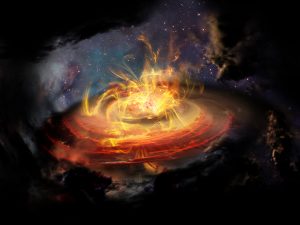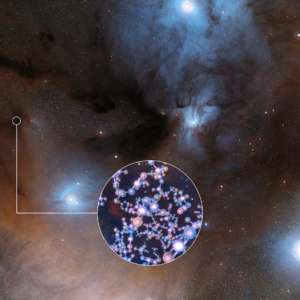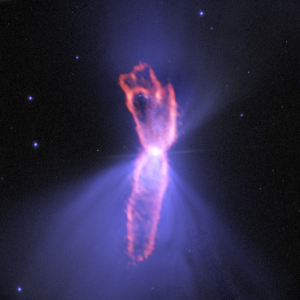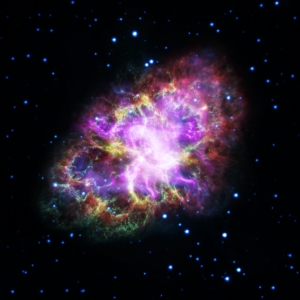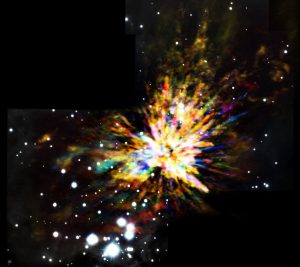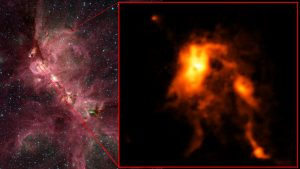To make a star, the conditions inside interstellar gas clouds have to be “just right.” When it comes to a cloud’s magnetic fields, however, those conditions may range from powerful and orderly to weak and chaotic, new ALMA observations suggest.
One of Life’s Building Blocks Found around Infant Sun-like Stars
ALMA has observed stars like the Sun at a very early stage in their formation and found traces of methyl isocyanate — a chemical building block of life.
ALMA Returns to Boomerang Nebula
The Boomerang Nebula — the so-called “coldest place in the universe — may get its frigid nature from a companion star supercharging a rapidly expanding outflow of gas.
IMAGE RELEASE: A New Look at the Crab Nebula
Astronomers produced a dramatic new image of the famous Crab Nebula by combining data from five different telescopes spanning the breadth of the electromagnetic spectrum.
Image Release: ALMA Captures Explosive Star Birth
Star birth can be a violent and explosive event, as dramatically illustrated in new ALMA images.
Protostar Blazes Bright, Reshaping Its Stellar Nursery
A protostar in the Cat’s Paw Nebula is undergoing a powerful growth spurt.






